About a year ago my television display died and I was forced to buy a new TV. I had been using the Lacewood V2.0 amplifier for the sound system and, when I plugged in this new TV, it formed a bad ground loop with the amplifier, introducing a nasty hum. This was not an insurmountable problem. I simply dug through my parts closet until I found a little line isolator I had built about a decade previous for some project I was working at the time. I installed this isolator and the problem went away. But that’s not the end of this story.
The other night I was listening to a concert on the TV and it sounded really good. As I listened to it, I thought about the TV sound card and the Lacewood amplifier and that’s when I remembered the isolator. Then I remembered how I built it.
This was not some high fidelity unit with expensive audiophile transformers. This was a slapped together adapter using the “cheapest of the cheap” in audio transformers; a pair of little transistor audio transformers with a 1kΩ-CT primary and an 8Ω secondary. I had used these at the time specifically because, with their ≈11.2:1 turns ratio, they delivered about 21dB of line level adjustment. This was something I needed at the time. The specified impedances were really unimportant as I was not using them with speakers. I had even used this very adapter a few times over the intervening years simply because of that line level shifting capability.
Now, I was having trouble rationalizing the obviously good performance of the unit today with the parts I had used to build it back then. Here is what it looks like.
It’s just two small transformers and four RCA jacks in a little plastic project box. The transformers I used were sold by Radio Shack here in the United States as a general purpose output transformer for small transistor audio circuits; p/n 273-1308. Here’s what they looked like and the published specifications.
These are tiny transformers; about the size of a child’s glass marble. The core is tiny which accounts for the specified low frequency response of -3dB@300Hz. But they didn’t sound that bad in my living room. Then I realized that these were specifications when used to supply power to a speaker. A power level likely in the region of 100mW to 200mW. But as line level transformers, the power levels would be much lower because of the line level application. So I decided to run the little unit through some testing at line levels to see how it did. Here’s the test setup.
It’s really a simple test. I used my signal generator to drive the “high” impedance side of the transformer and monitored the output on my oscilloscope. My signal generator has a 600Ω output impedance which produced problems driving the nominally 1Ω low side of the transformer. However, it could drive the 70Ω side without a problem. But since transformers are lossless linear two-port networks (to a first approximation), which way you drive the ports doesn’t affect their performance.
To say that I was surprised by the performance measurements would be an understatement. I expected it to be better than the specifications shown above, but nowhere near what I actually measured. Here is the bandpass characteristic with a 1.0v peak drive signal on the high side of the transformer.
These transformer gain characteristics are actually flat to within 0.2dB from 30Hz all the way through 100kHz (where I stopped testing). And they are only down about 0.6dB at 20Hz! It’s no wonder that they sounded so good in the TV system, they are much better performers than the television sound card or the Lacewood V2 amp itself. And the insertion loss was measured at -20.54dB midband which is very close to the specified -20.97dB insertion loss as derived from the turns ratio.
As I was taking gain measurements I was also watching the input and output waveforms. Down to 60Hz they were both what I would characterize as “clean” with no visible distortion. As the frequency dropped from there the output waveform began to distort showing the typical pattern due to insufficient core magnetization. But even at 20 Hz the waveforms were much better than many amplifiers I’ve tested over the years.
My thought after testing was that I should stockpile a bunch of these for future line level projects. At first I was disappointed because the RadioShack website shows these as “sold out”. But then I found something interesting. A little transformer sold by Mouser p/n 42TM013-RC which has almost identical specifications to the little units sold by Radio Shack. And it’s also cheaper.
I think that I’ll add a handful of these to my next Mouser order. When I get them, I’ll check their bandpass characteristics. I’m hopeful for similar performance.
This is a good lesson in parts performance. Even though the parts were inexpensive and marked as one thing, doesn’t mean that they won’t give very acceptable performance if used properly in another application.
As always, question and comments are welcome.

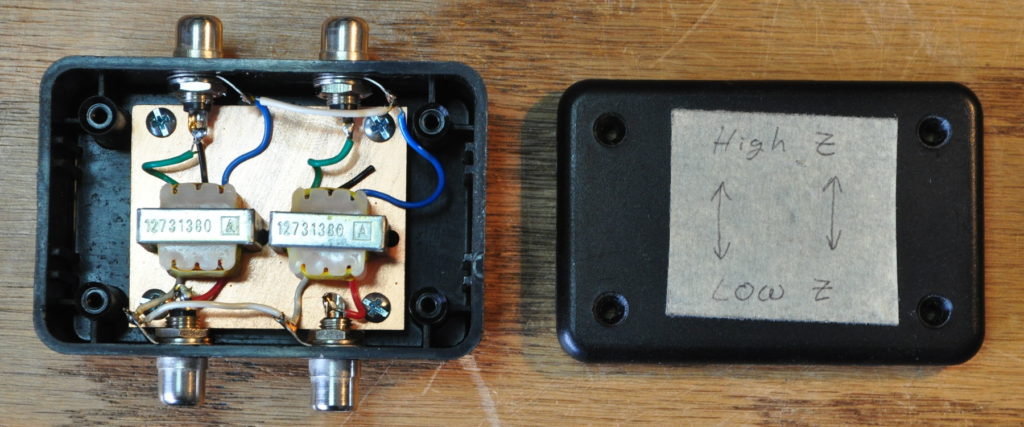
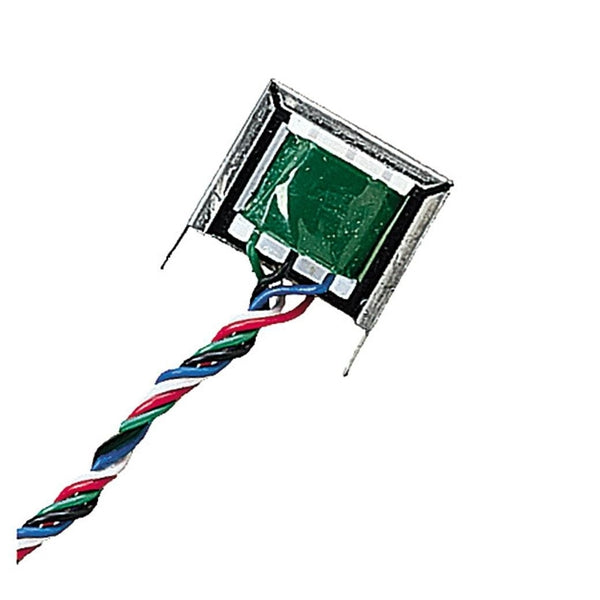
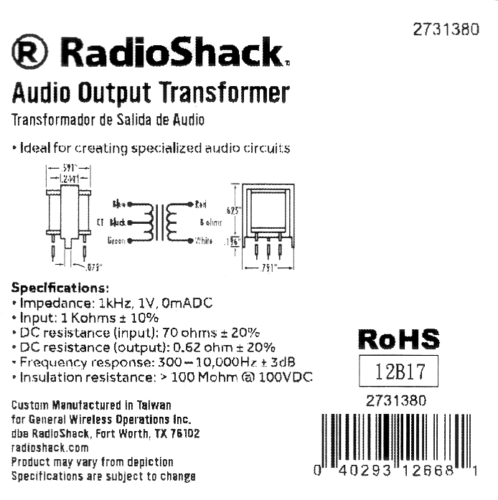
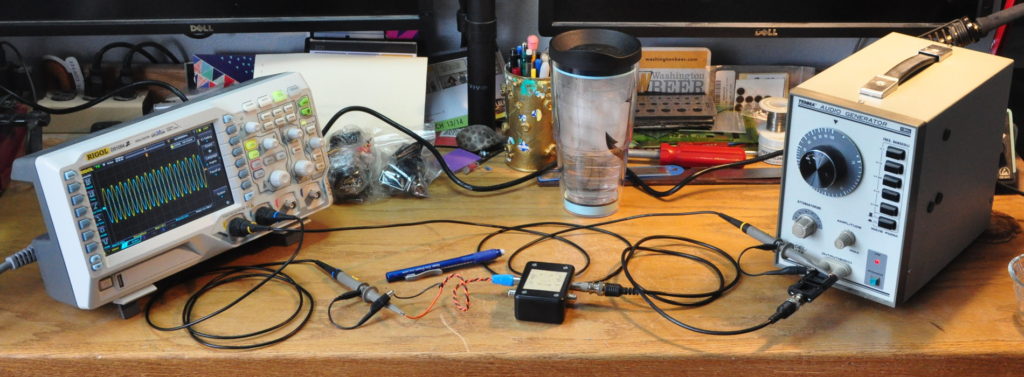
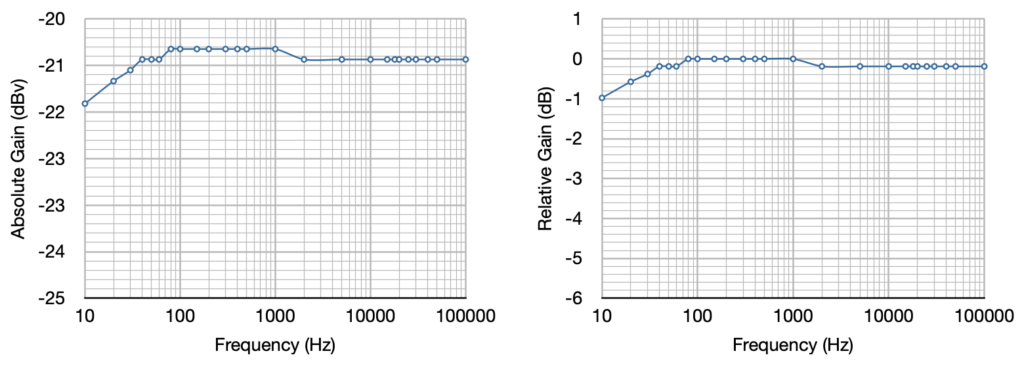
Excellent post, definitely getting some. Thanks.
Funny. I just realized that I should probably write “11.2 : 1” somewhere on that adapter so I always know what the turns ratio is. (1000Ω/8Ω)^0.5 ≈ 11.2 🙂
I have a few of the radio shack ones in my parts boxes. I thought I would probably never use them. I will now. Heck, I even have one of those little project boxes in there as well.